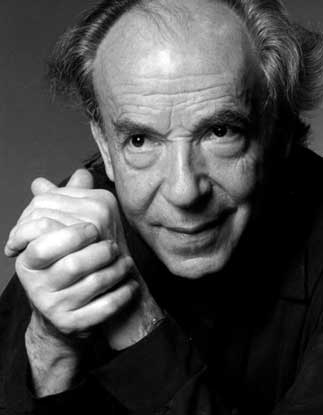By Stephen Brookes
The Washington Post • November 13, 2007

Paul Badura-Skoda
The legendary Austrian pianist Paul Badura-Skoda celebrated his 80th birthday last month, and after a lifetime of gold-standard performances, he'd be forgiven for resting on his considerable laurels. But in a bravura performance Sunday at the National Gallery of Art's West Garden Court, Badura-Skoda seemed to shrug off the decades, playing with power, remarkable fluidity and the unerring musicianship for which he's become famous.
A last-minute change in the program disappointed some listeners, who were looking forward to hearing two works by Schubert, whom the pianist has a particular affinity for. And the opening piece, Haydn's Sonata in A-flat, was a bit of a letdown with its a wooden Adagio and a finale that melted into mush in the venue's notorious acoustics.
But Badura-Skoda quickly turned things around in Beethoven's Sonata No. 21 in C (the "Waldstein"), which he played at the gallery in 1998. It's a work of almost triumphal exuberance, and the pianist brought it off with near-total command; a riveting, even exalting performance with little apparent loss of technique or energy over the past decade. Schumann's virtuosic, wonderfully variegated "Symphonic Etudes in the Form of Variations," Op. 13, was equally impressive.
The most interesting part of the program, though, came in the elegantly brooding "Fantasy on Flamenco Rhythms," a late work by the shamefully little-heard Swiss composer Frank Martin. Written specifically for Badura-Skoda, it filters the traditional rhythms and elemental spirit of flamenco through a sophisticated and thoroughly modern mind. Badura-Skoda played it with authority -- and a kind of quiet, smoldering passion.